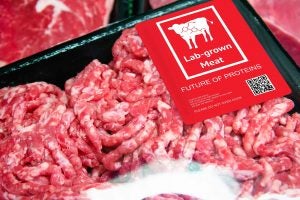Have you noticed that meat is always the “culprit”? Obesity. Environmental degradation. Cancer. Animal abuse. Climate change. Rainforest destruction. Stress. Violence. Literally, whatever the societal ill — even if the link with meat is dubious — the grand solution is always for humans to stop eating meat.
These ideas are no longer the crazy rantings of a PETA member either. Schools are implementing meatless Mondays. Recipe websites are banning meat dishes. Meat alternatives are growing in popularity on the premise of solving meat’s destructiveness. The anti-meat narrative has gone mainstream.
» Related: Viewpoint: Targeting ag youth brings out the worst in animal-rights activism
So it shouldn’t surprise us that a proposal as radical as the PAUSE Act almost made it on the ballot in Colorado. And a similar initiative is gaining support in Oregon. The proposed laws would essentially criminalize good animal husbandry practices, with penalties for things like neutering, spaying, and artificial insemination. If these proposals ever became law, farmers and ranchers would be convicted for taking care of their animals.
But there’s something else that scares me even more than sending these ridiculous initiatives to the ballot; it’s the fact that there were enough people in Colorado and Oregon who think it was necessary! Most people probably don’t understand the ins and outs of good animal husbandry. No one expects them to. But why else would they sign onto a law that allegedly outlaws animal abuse, neglect, and assault unless they think that’s happening on our farms?
Once upon a time, PETA members were nothing more than fringe radicals throwing red paint on models wearing fur. Society’s perspective is shifting though. And now an increasing number of Americans are open to lab-created meat products.

Michigan State University’s 2021 Food Literacy and Engagement poll found that 41 percent of Americans were likely to buy faux meat that looks and tastes like real meat. That’s up from only 33 percent in 2018. The numbers are likely to continue climbing as grocery store shelves boast a wider selection, from beef and milk to chicken and, even, cheese.
Not that there is anything inherently wrong with alternative products. The demand for real animal products is only expected to increase, especially as China’s middle class continues to grow. Alternative meats, cheeses, and milks can help fill the gap between production and demand. And, of course, there are some people who just like the alternatives better. As long as they’re aware of nutritional differences, personal preferences are perfectly acceptable.
But the problem is when people make choices to buy plant-based or lab-grown meat products solely because they believe meat is the big boogey man they’ve heard about. Are you eating an Impossible Whopper because you enjoy it more than a regular Whopper? Or are you making food choices based on misinformation that eliminating meat will solve those societal ills I mentioned?

The distinction matters. Because behind every beef patty, every chicken nugget, and every slice of bacon is a family farmer. The constant attacks against meat affects their bottom line, and whether the farm will be passed along to the next generation. In the case of the PAUSE Act, the stakes are even higher — farmers could go to prison just for implementing good animal husbandry.
So before you dive into your next perfectly cooked steak (I prefer the reverse-sear method), consider the rhetoric and the direction things are headed. The public-relations war always makes meat the villain, and usually the bad guy doesn’t win in the end.
Amanda Zaluckyj blogs under the name The Farmer’s Daughter USA. Her goal is to promote farmers and tackle the misinformation swirling around the U.S. food industry.



